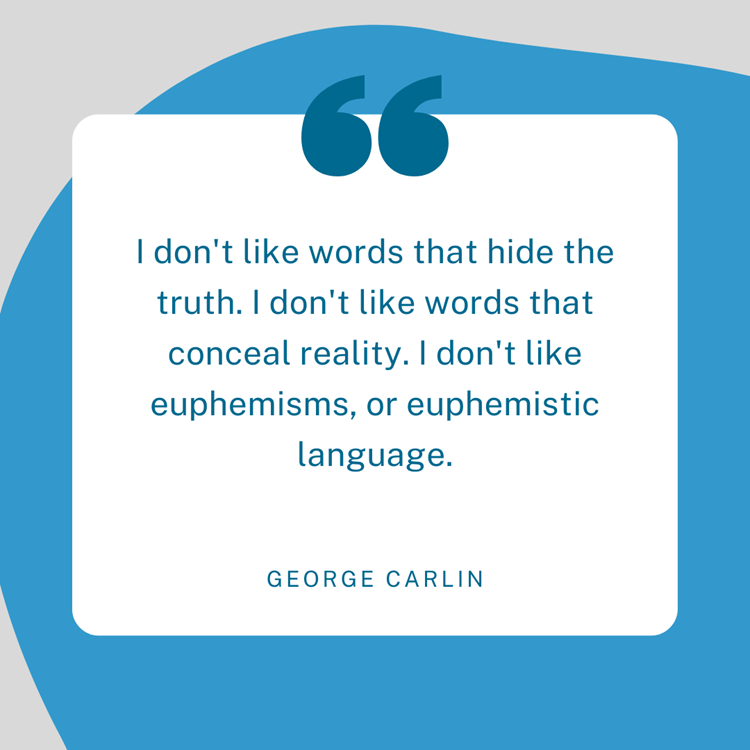
Do you remember the last time you attempted a do-it-yourself project?
- Assembling furniture
- Installing new software
- Setting up your first blog
Did the simple-to-follow instructions leave you feeling stupid? You are not alone. User manuals are the poster child for making users feel stupid.
When you think about your business communication, embrace that feeling. No matter the topic, it’s new to someone – so keep it simple.
The following are 3 writing tricks that help keep it simple for your readers.
Writing Trick #1 – Can You Headline That?
This is an old trick I learned from my corporate training as a facilitator for group meetings. And while it smacks of corporate speak, the concept is a good one (in my humble opinion).
- Imagine you are responsible for capturing key points and writing them on a board.
- One of the participants has a point (you think).
- But that person drones on and on and on.
As facilitator, you ask the participant one question:
Can you headline that for me so I can capture the key points?
This technique forces the communicator to focus on the message – what’s the point? And it’s a better technique than angrily asking, “What’s your point?” 😉
Try the following approach.
- Ask – Can you put your thoughts into a few key words? Like a headline.
- If the person struggles with that, could someone listening help?
- Then ask the original person if what the listener shared captures the point.
Now, read your content. Could your reader headline your message?
If not, remember the 3 Es – edit, edit, edit.
Writing Trick #2 – Think Simple
One of my favorite bits by comedian, George Carlin, dealt with euphemisms – a milder expression of a harsh or offensive word or phrase.

George talks about the phrase shell shock. The term referred to a condition experienced by soldiers when their nervous system snaps from the stress of combat.
Here, according to George, is how the word evolved.
- Shell shock
- Battle fatigue
- Operational exhaustion
- Post traumatic stress disorder
While the comedy routine focused on euphemisms, it also shows how we make the simple complex.
Use simple words to convey your message. Think shell shock.
Download Simple Alternatives to Complex Words to get your simple writing started.
Writing Trick #3 – Child’s Play
Look at how children learn to read.
- They start with the basics – A, B, C.
- Pictures depict the words.
- They reinforce their skills through repetition.
Simple elements transform your business communication into child’s play. It’s more fun, too.
Starting with the Basics
1. Have a beginning, middle and end to your story.
- What’s the problem, challenge or point of your story?
- Describe the journey or solution.
- What is your ending or outcome?
2. Explain new concepts. You may have been in the business twenty years, but your message may be new to the reader.
- Spell out industry terms and acronyms.
- Define technical terms.
- Walk your reader through something new.
Using Pictures/Images
Don’t you hate instruction manuals with no pictures? Or those with pictures that bear no resemblance to your product?
The right pictures or images keep your message simple, clear, and unique.
- Images help break down a process.
- They simplify complex concepts.
- The right picture can reinforce your message.
Examples
The image you choose or how you combine the picture with text may confuse readers instead of simplifying your message. Below are a few examples.

The Bad: What were they thinking?
From the what were they thinking archives, Burger King released an ad to announce the food chain cut artificial preservatives. That sounds good, right?
It could have been except for the image the ad agency chose. It showed a gross, moldy Whopper after 34 days with no preservatives. To make matters worse, the company added the line – “the beauty of no preservatives.”
The Good: Simple, Clear, Unique
I love the simplicity of this summer ad for McDonald’s. This is one of those times when even words are not necessary.

Rally the Reinforcement
Children do not start reading the first time they pick up a book or learn their ABCs. They bring you that same book and repeat the same story until they learn the words.
- As adults, we are not so different.
- Like children, we are easily distracted (hello, social media).
- We need reinforcement, too.
To keep readers focused on your message, provide them with reinforcement.
- Remind readers of the problem or challenge.
- Summarize key points.
- Wrap it up with your ending or outcome.
Bag of Tricks
We know attention spans have only gotten shorter. We must trick our brains to stay on track while reading. By incorporating 3 writing tricks, you can help keep your readers on track.
- Headline your message.
- Use simple language.
- Support and reinforce your message.
What writing tricks do you have to keep it simple, so readers don’t feel stupid? Share your best tricks in Comments.
Note: This post originally published on February 6, 2012. This May 30, 2023 post updates it.
Credit: BigStock Photo
Credit: Canva Credit
==================================
Helping you keep your business communication simple, clear, and uniquely yours.
==================================

Cathy, I love the way you’ve chunked this down… which is one of my secrets – break it into small, even tiny, steps.
Hi Anne: That’s what works best for me – small chunks. 🙂 Thanks for stopping by, Anne.